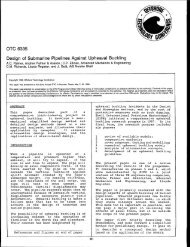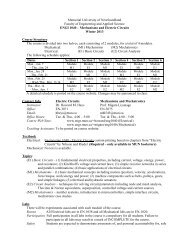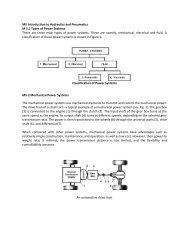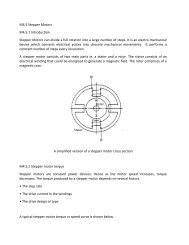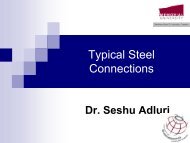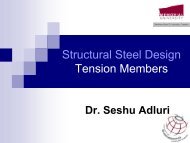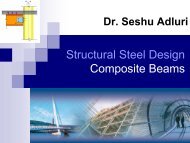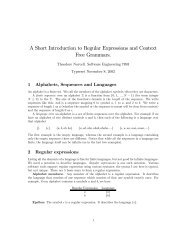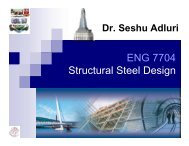5003 Lectures - Faculty of Engineering and Applied Science
5003 Lectures - Faculty of Engineering and Applied Science
5003 Lectures - Faculty of Engineering and Applied Science
Create successful ePaper yourself
Turn your PDF publications into a flip-book with our unique Google optimized e-Paper software.
E<strong>5003</strong> - Ship Structures I 132<br />
© C.G. Daley<br />
Step 4: Find fixed-end moments:<br />
In this step, we find the fixed end moments for<br />
each beam end. In the example at left, we have 3<br />
beams connected in a frame. The top two have<br />
loads <strong>and</strong> so have fixed-end moments. The vertical<br />
beam (the column) is unloaded so its FEM are<br />
zero.<br />
Steps 5, 6, 7, 8, 9: Perform iterative calculation to<br />
correct end moments. The fixed-end moments<br />
found in step 4 are the first estimate <strong>of</strong> the<br />
solution. The moments are in equilibrium with the<br />
external loads, with the only problem being that<br />
some <strong>of</strong> the joints are incorrectly fixed, when they<br />
should be free to rotate. We will set up a<br />
calculation table that will allow us to add a<br />
correcting moment to each joint. We will perform<br />
the corrections iteratively <strong>and</strong> the solution will<br />
converge to the correct answer.<br />
The table with the solution is shown on the next<br />
page. With two beam, there are 4 end <strong>and</strong> so there<br />
are 4 columns in the table. The first row contains<br />
the moment distribution factors. The second<br />
contains a note describing the target moment (this<br />
is an extra feature normally not included). The<br />
third row contains the fixed end moments. The<br />
fourth row shows the total correction (later<br />
ignored), with the fifth row dividing the correction<br />
among the beam ends. The sixth row adds the<br />
carry-over moments from the neighboring ends.<br />
And then the seventh row add the third, fifth <strong>and</strong><br />
sixth row terms to get a new estimate for the end<br />
moments.<br />
The whole process is repeated until the solution is<br />
sufficiently converged.





